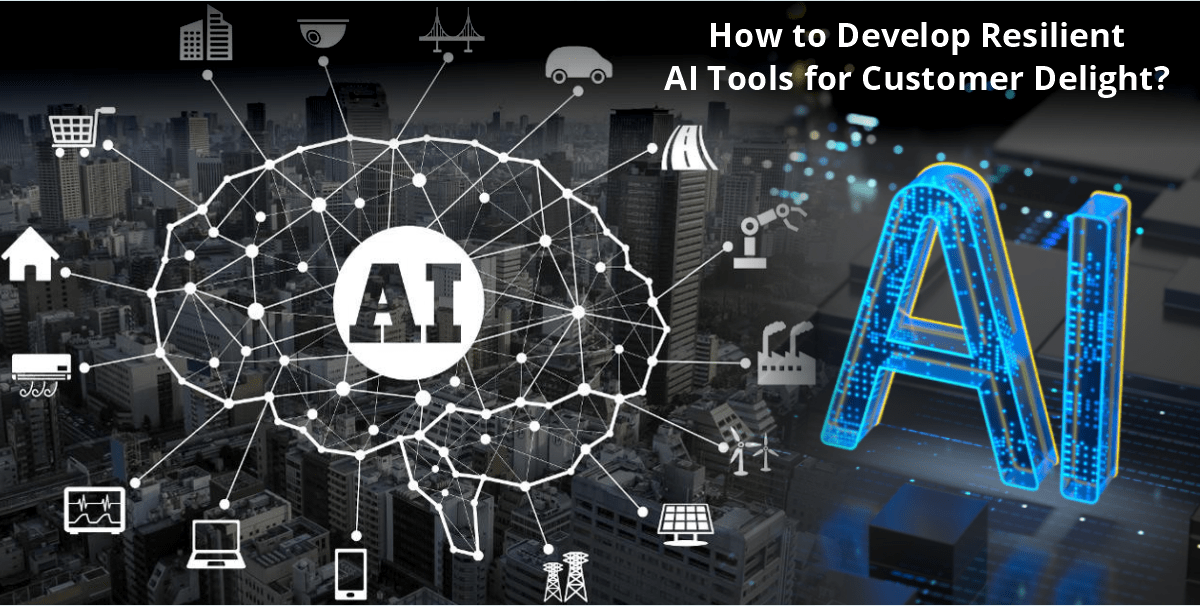How to Develop Resilient AI Tools for Customer Delight?
Businesses are turning to AI solutions in the currently rapid digital world to improve customer success. Artificial Intelligence (AI) can revolutionize customer interaction through its use in chatbots and personalized recommendations. However, developing trustworthy AI solutions calls for cautious preparation, a thorough comprehension of client demands, and a dedication to ongoing development. This is a short guide on creating AI solutions that actually help customers succeed.
Understand Your Customers
Gaining a deep understanding of your clients is the first step towards developing dependable AI technologies. What hurts them the most? What remedies are they trying to find? To get information, run focus groups, do surveys, and examine client feedback. Increased consumer data will improve your ability to customize AI tools to your clients’ needs.
Define Clear Objectives
Before beginning development, it helps to establish specific goals. What particular issues do you hope your AI tool will resolve? Are you trying to increase overall customer satisfaction, boost personalization, or shorten response times? Setting and achieving specific goals can help you stay on track and evaluate your progress in the future.
Choose the Right AI Technology
AI technologies are not made similarly. You may require computer vision, natural language processing (NLP), or machine learning, depending on your goals. NLP is crucial, for instance, if you’re developing a chatbot to comprehend and reply to user inquiries. Examine various AI technologies and select the most appropriate one for your requirements.
Ensure Data Quality
AI tools use a lot of data. Accurate and high-quality data are essential for training your AI models. Make sure the data you have is unbiased, useful, and clean. Update your data often to take into account the latest consumer behavior and trends. Your AI tool will be more dependable the richer the data.
Develop Transparency and Ethics
AI development should always be transparent and ethical. Clearly communicate to your customers when they’re interacting with an AI tool. Avoid collecting unnecessary data and ensure you’re compliant with data privacy regulations. Developing trust with your customers is simply important, and transparency is key to achieving that.
Test Rigorously
Before deploying your AI tool, it’s essential to test it thoroughly. Perform both automated and manual testing to locate any bugs or issues. Simulate various customer interactions to ensure the tool performs well under different scenarios. Reliability comes from rigorous testing and refining.
Integrate with Existing Systems
Your AI tool should nicely blend in with your existing systems. Whether it’s your CRM, helpdesk software, or e-commerce platform, ensure that the AI tool can communicate and work in harmony with other tools you use. This integration will provide a smoother experience for both your customers and your team.
Train Your Team
Even the most advanced AI tools require human oversight. Train your team to understand how the AI tool works, how to interpret its outputs, and how to intervene when necessary. A well-informed team can maximize the effectiveness of the AI tool and ensure it’s used to its full potential.
Monitor and Optimize
Once your AI tool is live, the work doesn’t stop. Continuously monitor its performance and gather feedback from customers and employees. Use this information to make necessary adjustments and improvements. AI tools should evolve with your business and customer needs.
Focus on User Experience
Ultimately, the success of your AI tool depends on the user experience. Ensure the tool is user-friendly and intuitive. Customers should feel it easy to engage with the AI tool and achieve their.
